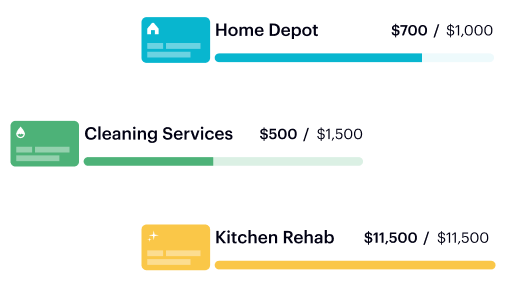Single-family homes can balance out the risks of real estate investing with higher quality tenants and better profit margins. And, young families tend to stick around for job opportunities and school stability for their children, resulting in less turnover and fewer vacancies to fill. They also have steady paychecks to cover higher rent prices on single-family homes, which usually cost 20% more than apartments.
New single-family construction in Indiana is up nearly 24% to meet the demand of young families looking for safe, affordable neighborhoods to call home. Indiana has one of the lowest crime rates in the U.S., and the cost of living is 38% less than the national average. Childcare is a bit pricey, but there are state subsidy programs to help families cover $12,612 in annual expenses for center-based childcare.
Indiana’s price-to-rent ratio is 16.09, making real estate less expensive for families to rent than it is to buy. Investors can offset acquisition costs with low borrowing rates to capitalize on Indiana’s rising demand for single-family rentals. Use our list of the best cities in Indiana for young families to find your next real estate opportunity.
1. Carmel
- Avg Cost of home: $464,000
- School ranking: 1
- Crime rate: 6.58
- Number of jobs: 52,481
- Diversity: Low
- Population growth: 1.71%
With over 122 safe suburban neighborhoods, Carmel is rated the best city in Indiana to raise a family. Carmel offers nearly 100,000 residents affordable housing in the top school district with national accolades for academic performance and extracurricular achievements. The expansive public parks system includes a 16-mile bike trail with direct access to Central Park, a 161-acre recreational facility.
Almost 30% of Carmel property tax income is generated by commercial real estate, resulting in one of the lowest residential tax rates in the state. Current housing trends might offer a better deal on buying below $464K. 42.8% of homes in Carmel sold below the asking price in July 2022. As a landlord, this will reduce your initial investment and operating costs to help keep your profit margins in the black.
If you’re buying rental property in Carmel, keep your options open. Single-family homes bring in around $2,396 monthly, with an annual rent increase of 4%. On average, apartments rent for $1,555, which is 20.7% higher than the previous year. Across the board, 2-bedroom units have the highest market share and annual growth rates up to 24%.
2. Zionsville
- Avg Cost of home: $559,000
- School ranking: 2
- Crime rate: 3.27
- Number of jobs: 52,705
- Diversity: Low
- Population growth: 2.08%
Families are flocking to Zionsville, Indiana, for its small-town charm and public schools that rank within the top 5% of 364 school districts in the state. Sitting just outside Indianapolis, this suburban neighborhood is close to metropolitan amenities but has crime rates 85% below the national average. More than 28,000 locals can feel safe in their communities and surrounding parklands, sports fields, nature trails, and recreational facilities.
Housing trends reflect 92.84% occupancy rates, with families accounting for 84.32% of the market. Single-family homes are the most common property type in Zionsville. Rental inventory is low, but new builds are keeping pace with a growing population. This is a good opportunity for investors to capitalize on residential development instead of buying older homes to save on renovation costs.
Zionsville real estate investing requires a decent amount of upfront capital to cover an average price tag of $599K. These costs are offset by strong demand for family households that offer higher returns. Rental income ranges between $1,325-$8,500, with 3-4 bedroom units showing annual growth rates up to 20%. Developing neighborhoods in Eagle Creek, Ashburn, and Devonshire have the most potential for breaking into the market.
3. Fishers
- Avg Cost of home: $380,000
- School ranking: 5
- Crime rate: 7.01
- Number of jobs: 51,932
- Diversity: Low
- Population growth: 3.49%
Fishers, Indiana, is one of the largest municipalities outside of Indianapolis. This suburb is home to more than 93,000 residents spread across 16 neighborhoods in a mix of established communities and new subdivisions. Nature trails wrap the city in greenspace and public parks. Steady residential development alongside a school district with a four-star rating makes Fishers one of the best towns in Indiana for young families.
Diverse housing options offer more flexibility for investors and prospective buyers to enter Fishers’ real estate market. Listing prices range from $129.9K to $3.5M, with a median home value of $280,300. Limestone Springs is the most affordable neighborhood. Pricing starts at $200K, and monthly rental income is generally between $1.7K to $2.5K.
Families currently make up 56% of the rental market in Fishers, Indiana. 2-bedroom units are the most common, but average monthly rent prices remain flat at $1,816. Rent for 4-bedroom units has spiked by 85.7% to $4,836/monthly, but this is bound to even out. 3-bedroom units earn around $2,015, with more reliable annual rent increases of 5.9%. Properties with three bedrooms priced below $300K typically have a higher price-to-rent ratio that can help speed up returns on your investment.
4. Westfield
- Avg Cost of home: $433,000
- School ranking: 6
- Crime rate: 7.82
- Number of jobs: 46,689
- Diversity: Low
- Population growth: 5.16%
Westfield, Indiana, is known for its Midwest values and top-performing schools, attracting new families to contribute to its growing population of 41,652. This friendly suburb offers a stable job market with low unemployment rates and an average household income of $120,919. Residents can enjoy a short commute to work and nearby multi-purpose sports fields that span over 400 acres in Grand Park.
Homeowner vacancy rates currently sit at 0.3%, shifting demand to rental properties. Renters take up 21% of Westfield real estate, and families occupy more than three-quarters of all households. You have to act fast and fork over some extra cash if you want to get in while demand is high. Most homes sell above the list price and go pending within four days.
Rental income ranges from $1,400 to $9,000/monthly, depending on the neighborhood. Brookside, Bridgewater Club, and Oak Manner will have high rent prices. Centennial and Sandpiper Lake properties will produce less monthly revenue, but listing prices are $13K-$178K below average.
Property taxes and operating costs will run you around $4,450, which is mid-range for the Westfield region.
5. Noblesville
- Avg Cost of home: $335,000
- School ranking: 23
- Crime rate: 8.78
- Number of jobs: 46,233
- Diversity: Low
- Population growth: 2.15%
Families are settling in Noblesville, Indiana, for its affordable waterfront views and nationally-recognized school district. There are 35 neighborhoods in Noblesville with a relatively low density of 64,430 residents. The sparse suburban infrastructure keeps traffic light and reduces school overcrowding. Communities are within arms reach of Potter’s Bridge Park, with 66 acres of parks, playgrounds, hiking trails, and tube rides on White River.
Of the 26,539 housing units in Noblesville, 77% are single-family detached homes. Future development is set to include more duplexes, courtyard apartments, townhouses, and multi-purpose units. This presents an excellent opportunity to create a diverse portfolio of new and existing residential properties that cost 13-66% less than other popular suburbs in Indiana.
Families represent 40% of the rental market, paying an average of $2,145 per month. 2-bedroom inventory is up compared to last year, with a median price point of $240K. These properties bring in $965-$2,750, with annual rent increases of 16%. Decent buy-in rates and a regular influx of new residents push investment risk down and potential profits up to +18% on long-term rental property investments in Noblesville, Indiana.
Final Thoughts
Using the chart below, you can see how we ranked each city in individual categories. As an investor, you may be more concerned about different metrics than others. Maybe you would like to attract tenants without children, and school ranking is not a major concern (or maybe it is the opposite). Make sure you research to find the right place for you, but the table below can be a great starting point.
Summary of Rankings
| Metric | Weight Ranking | ZIONSVILLE | CARMEL | NOBLESVILLE | FISHERS | WESTFIELD |
|---|---|---|---|---|---|---|
| Avg Cost of Home | 25% | 2 | 3 | 5 | 4 | 3 |
| School Ranking | 25% | 4 | 5 | 2 | 3 | 3 |
| Crime Rate | 20% | 5 | 4 | 2 | 3 | 3 |
| Number of Jobs | 25% | 5 | 4 | 3 | 4 | 3 |
| Diversity | 5% | 1 | 4 | 2 | 3 | 3 |
| Total | 100% | 3.8 | 4 | 3 | 3.25 | 3 |
| Extra metrics not scored | ||||||
| Job Growth | 2.4% | 2.5% | 2.5% | 2.5% | 2.5% | |
| Population Growth | 2.08% | 1.71% | 2.15% | 3.49% | 5.16% | |
| Lifestyle Score and Amenities | 88 | 89 | 86 | 86 | 86 | |






